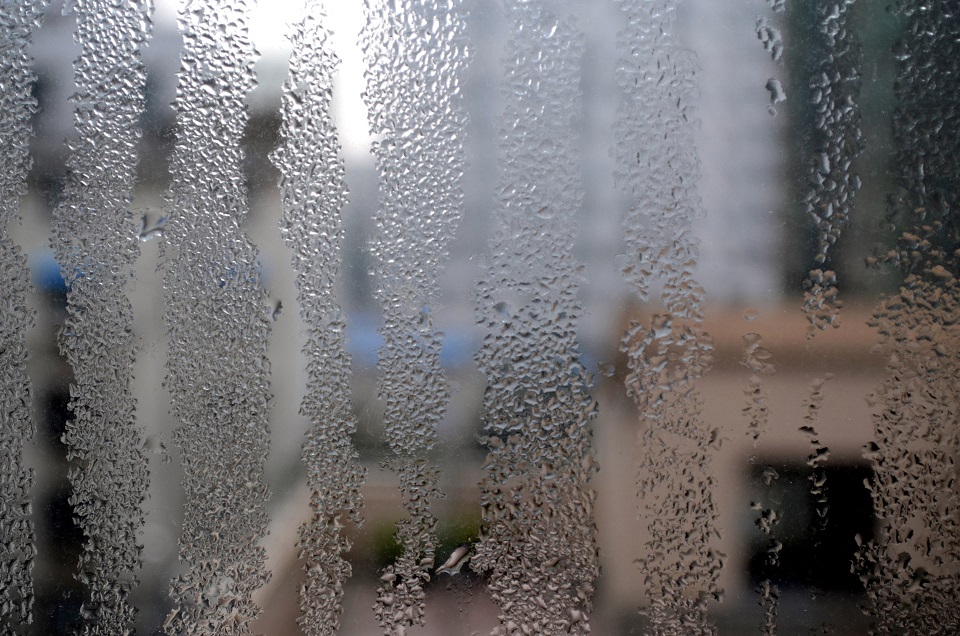
Property Management
Why does the condensation problem happen?
Condensation most commonly happens during the winter, but it can also occur at any time of the year. It can happen when the air in the home touches a surface that is cooler than the air’s dew point and can no longer hold the moisture, and hence condenses onto the surface closest to it.
Why there is a problem when there is condensation?
Condensation can affect many areas of the house. It can often result in an unhealthy living environment – growth of mould, mould spores, peeling of wall and ceiling paint, damage to fabrics, unpleasant smell in the property.
Prolong exposure to high levels of mould and indoor dampness can cause chronic diseases such as asthma.
What are the common signs that there is condensation in the property?
Condensation common signs include water collected on the inside of the windows or on windows sills. Another sign is when you see the wallpaper in the home start to peel off. Another sign that there is condensation in the property is when you feel that the fabrics in your home such as the beddings and clothing feel cold and damp.
How to prevent condensation in the property?
Condensation problems can be prevented just by changing your lifestyle or adding some mechanical installations to the property. Here are the 7 tips to prevent condensation in the home
1. Control the amount of condensation in your home by reducing the activity that causes condensation
Reducing the activity that creates more water vapour and humidity in the home can help reduce the level of condensation such as:
- Covering the cooking pans when cooking
- When ironing clothes, windows should be opened.
- When taking a bath, if you find the bathroom too humid, simply open the bathroom windows.
- Take any wet towels or clothes out of the bathroom to avoid further moisture in the bathroom
- Close kitchen door when cooking
- Close bathroom door when bathing
- Do not dry laundry on radiators
2. Have a continuous source of fresh air
In order to prevent condensation problems in your home, you need to have a continuous source of fresh air. A ventilation system can provide clean air inside your home. Good ventilation will help to make the air circulate.
3. Reduce the amount of humidity
A dehumidifier is used to minimize the amount of humidity in your home. A dehumidifier works by pulling air through a fan and removing most of the moisture, making the surfaces in the area dry. Having a dehumidifier in your homes such as in the kitchen and bathroom is a great way to reduce condensation in your home.
4. Heat your home
The best way to avoid condensation is to keep your home warm. So even if you are not at home keep the house warmer. Keep your thermostat 20 degrees Celsius when you go to bed or go out of the house.
5. Draught-proof your windows and doors
Draught-proofing your windows and doors will keep your home warm. It is a way to keep your home warm by not letting too much cold air get into your home and by saving warm air inside allows you to save more energy to heat the home. It is the cheapest form to save energy as well.
6. Insulate your home
Insulating the walls of your home will keep the house warm. Making sure that the walls and lofts are insulated well can prevent condensation.
7. Open Curtains and Blinds
Keep the curtain and blinds open. Windows that are covered with curtains and blinds are likely to experience condensation. So, tie back the curtains and raise the blinds to avoid condensation problems.
BLUESTONE PROPERTIES
We provide lettings and property management services. We are based in south London. To know more about us and how we can help you as a London landlord, call us on 0208 355 3405 or simply contact Bluestone Properties.
We have been managing rental properties for over 12 years, so we know our stuff! If you're looking for an experienced team that can take care of all of your property needs, give us a call today!










